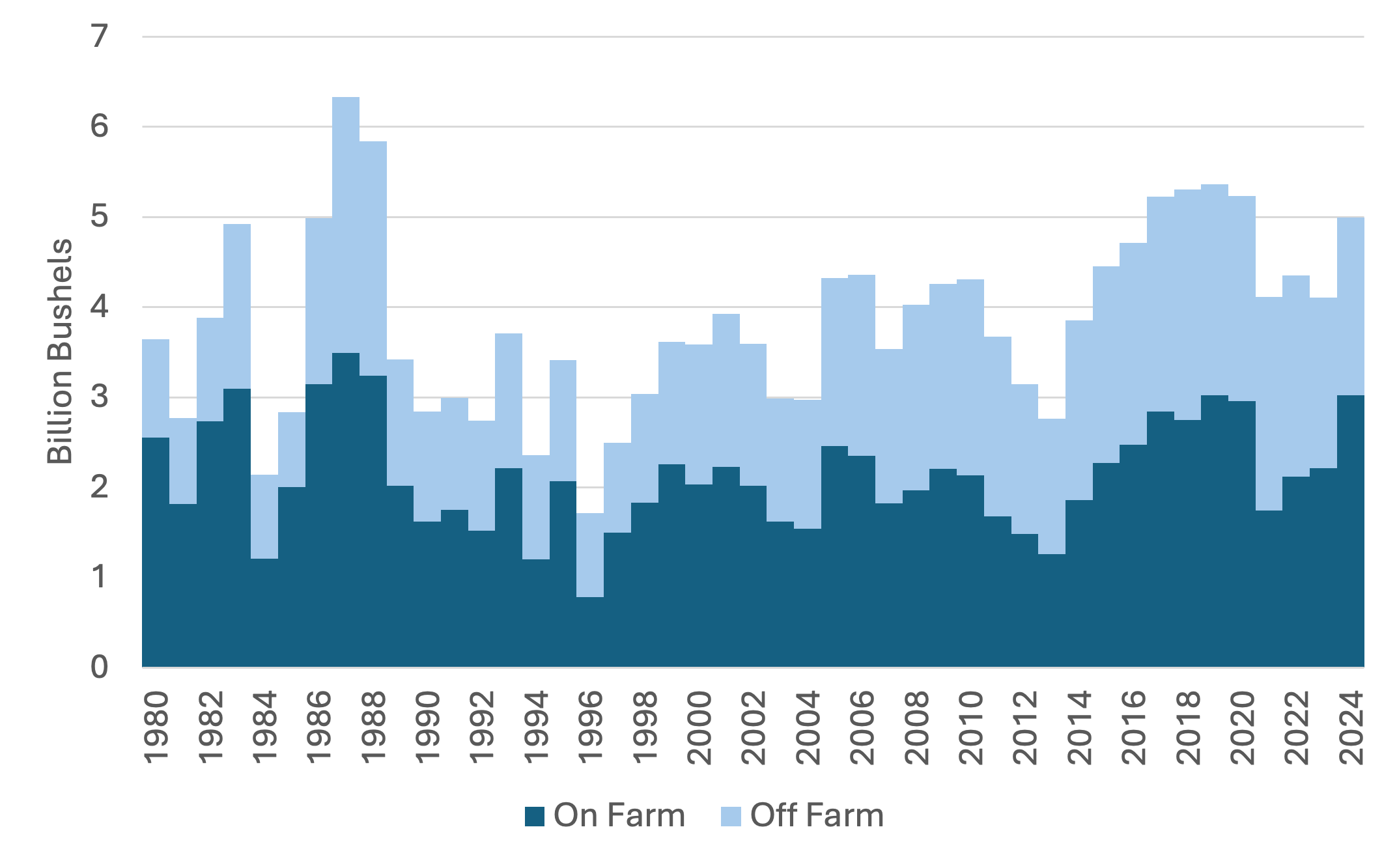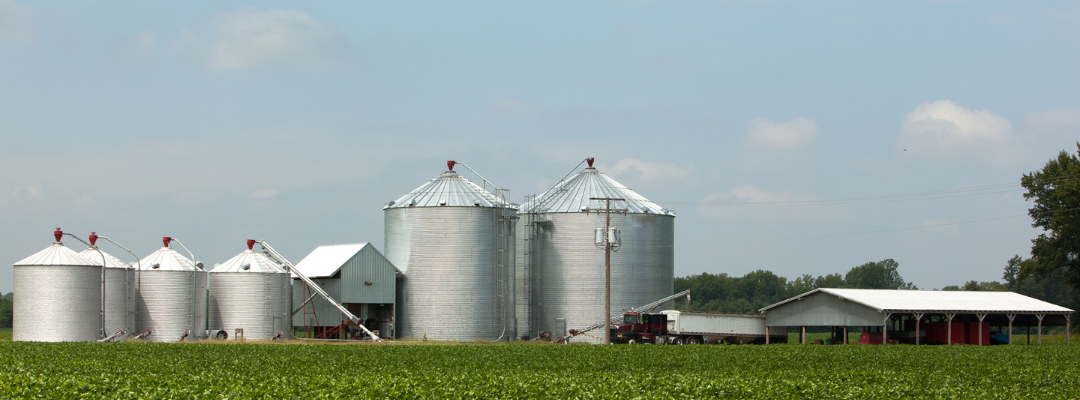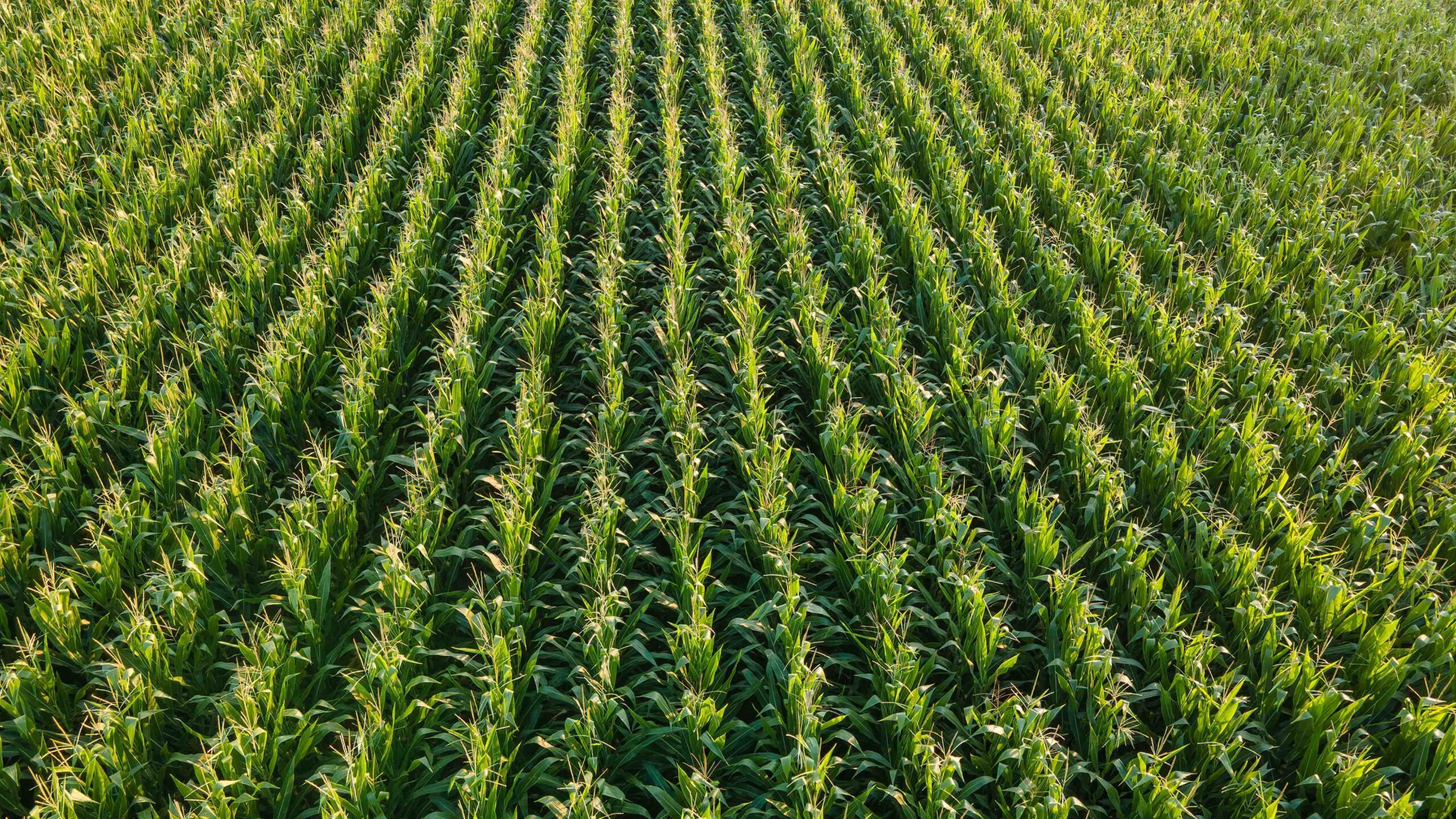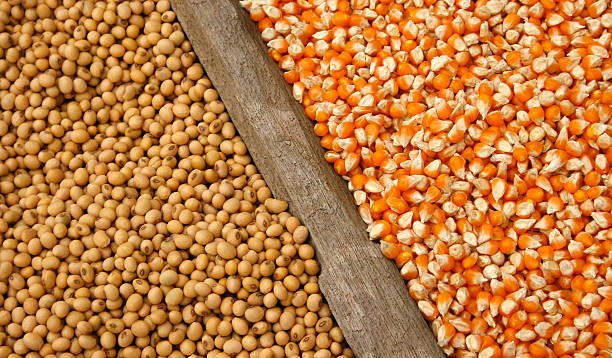As soybean prices for U.S. producers deteriorate, they face fierce competition from greater Brazilian production in the export market. USDA-WASDE projects the 2024/25 average farm price to be down $3.40 from two years ago, at $10.80 per bushel. U.S. soybeans rely heavily on the export market; on average, 47% of U.S. soybeans were exported in the previous five years. For over a decade, Brazil has maintained its position as the world’s largest soybean exporter, and in recent years, it has further expanded its global market share (Figure 1). USDA-WASDE projections for the 2024/25 marketing year estimate Brazil will account for 58% of global soybean exports, with the United States trailing at 28%. The remaining 14% will come from other exporting nations. While Brazil’s share has dipped slightly from last year’s peak of 59%, it continues to dominate the global soybean export market.
The U.S. soybean market is facing challenges with Brazil strengthening its position as China’s primary supplier. China has been working to become less dependent on U.S. soybean purchases, and increased production has allowed Brazil to become the preferred trading partner. According to the Foreign Agricultural Service’s Beijing post, in the first nine months of the 23/24 marketing year, the U.S. accounted for 26 percent of China’s soybean imports, compared to 69 percent from Brazil. Reports also indicate that China is dealing with an oversupply of soybeans, as recent high purchases come during subdued feed demand. This fact has hampered sales to China as we enter the peak marketing season for U.S. soybeans. While U.S. sales to China have risen recently, they are still trailing behind last year’s sales and the five-year average. As of the week ending 9/19/24, the total soybean commitments to China totaled 6.8 million metric tons, compared to 7.4 million for the same time last year and the five-year average of 10.6 million.
The export outlook for U.S. soybeans is further complicated by the prospect of low river levels on the Mississippi River, a concern highlighted in last week’s article “Low River Levels on the Mississippi River: Not the Three-peat We Want” (southernagtoday.org). Recent rainfall from Hurricane Helene has improved the river situation, as the Mississippi River at Memphis is expected to rise above the low river threshold. Without a positive shift in the current export scenario, U.S. producers face lower prices as they harvest a record soybean crop. With Brazil now dominating the export market, the potential for price increases this year depends heavily on the progress of Brazil’s soybean planting season. Although Brazil has just entered its planting window, dry conditions in the central region could lead to delays. If drought conditions develop, it could create an opportunity for higher prices for U.S. producers. Current forecasts call for rain over the next couple of weeks, but rainfall remains below normal.
Figure 1. Share of Global Soybean Exports by Country, 2010-2025

References
United States Department of Agriculture, Foreign Agricultural Service. Oilseeds and Products Update: Beijing, China – People’s Republic of China. CH2024-0116, 2024, https://apps.fas.usda.gov/newgainapi/api/Report/DownloadReportByFileName?fileName=Oilseeds%20and%20Products%20Update_Beijing_China%20-%20People%27s%20Republic%20of_CH2024-0116.
Maples, William E. “Brazil Expected to Continue Dominance of Global Soybean Exports.” Southern Ag Today 4(40.3). October 2, 2024. Permalink












